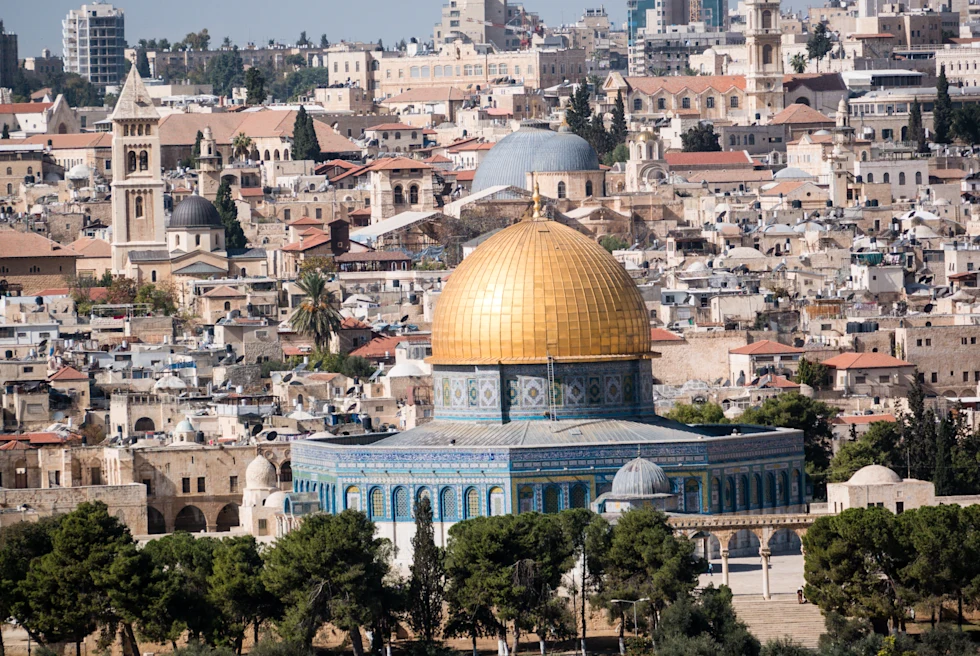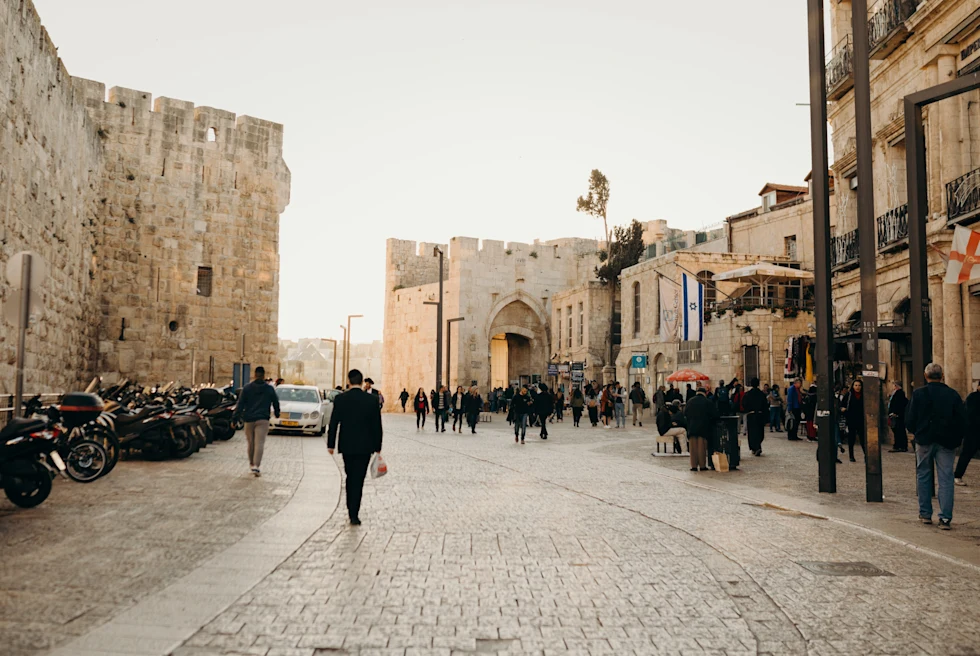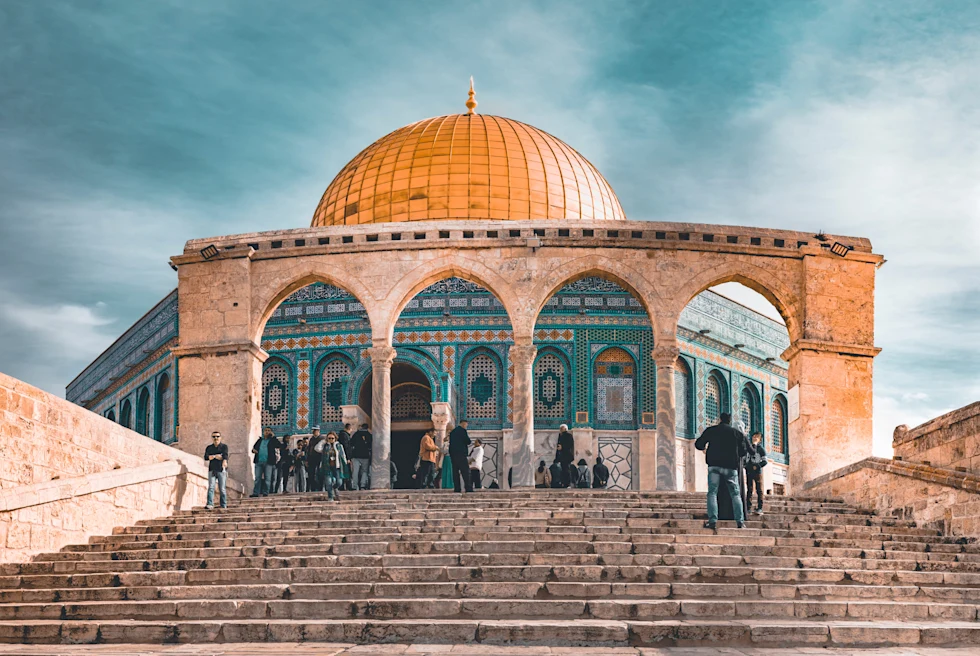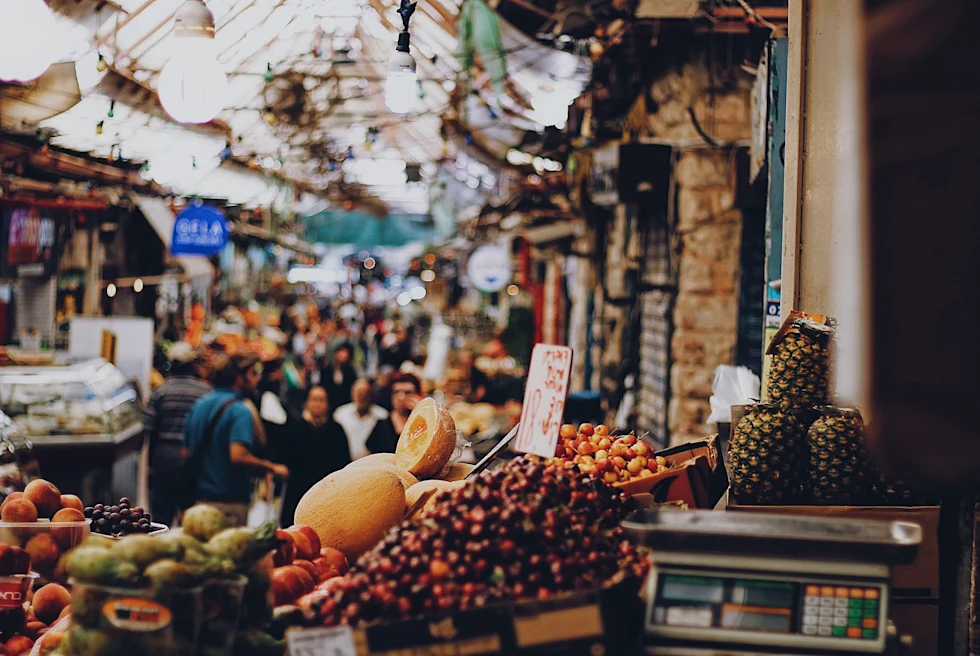
Curator’s statement
Jerusalem is a city of many names, many religions and many faces. From the ancient walls to the modern shops, Jerusalem is a city whose past, present and future are constantly on display. See the holy sites of Judaism, Christianity and Islam by day, and spend your night amongst the food and art of Machane Yehuda (the central marketplace). From the midrachov of Ben Yehuda to the cobblestones of the Old City, from the Israel Museum to the Cinematheque, the energy (and challenges) of this remarkable city are unique in every way.
The Fora Difference
Book with Sari to access exclusive perks and experiences on your trip.
Killer perks
Free upgrades, spa credits and more—we got you
Personalized recs
Customized travel planning for your style
Insider knowledge
Expert advice from people who’ve actually been there
Where to stay
Unlock perks by contacting Sari to book your trip.
Day 1: Arrive in Jerusalem

Depending on your flight arrival in Tel Aviv, you're likely to get to Jerusalem in the afternoon, either by train, Gett, taxi or sherut (a shared taxi service).
Check into your hotel, and head to the Aroma at the Mamilla Mall to grab an iced Aroma! Then head to the Haas Promenade/Tayelet for your first incredible view of Jerusalem.
Then, as dinnertime draws near, make your first official Jerusalem meal a classic one at Hummus Ben Sira, right of the pedestrian midrachov of Ben Gurion. You can always walk the Midrachov and check out the souvenir shops, and then back to the hotel for a good night's sleep.
Day 2: Explore the Old City

Today is all about the Old City. Whether you hire a private guide (hit me up for recommendations) or do it on your own, today we are going back in time. First, though, I hope you enjoyed a classic (and overwhelming!) Israeli breakfast!
If you want, you can start your morning with a Ramparts Walk atop the walls of the Old City, but either way, it's an easy walk from your hotel to the Old City; you'll most likely enter through Jaffa Gate. After you admire (and maybe buy?) some of the Armenian pottery you see, you'll walk through the "modern" Old City until you get to the Cardo, which is the heart (literally!) of the city during the Roman period. If you did not get your fill of souvenir shops on Ben Yehuda Street, there are plenty more here - and if you feel like it, you can join throngs of American tourists waiting to buy jewelry (and hear a story) from Hadaya the Jeweler. I'll confess, I have a few rings from him myself, and it is a great gift for folks at home.
Continuing on, you might want to stop at the Hurva Synagogue, originally built in the 16th century, which is practically new in this part of town! The Burnt House Museum is a cool stop too, giving a glimpse of what life might have looked like in the Second Temple period (587BCE-70CE). You'll keep walking (and be careful, those worn stones can be slippery) and arrive at the Kotel, the Western Wall. The last remaining wall from that same Second Temple, this site is the closest Judaism comes to a pilgrimage site, and currently operates as an Orthodox synagogue. This means men and women have separate sections, and women are expected to dress modestly, so make sure you bring a scarf or two to cover shoulders and turn into a makeshift skirt! If you'd prefer to stay all together, head to the side a bit. You'll find Robinson's Arch and the Davidson Plaza, which is an egalitarian section of the Wall where men and women can go together!
If you've gotten tickets for the Western Wall tunnels, you'll head there now. Or, depending on the hours, you MAY be able to visit Haram al-Sharif (the Temple Mount) to see Al-Aqsa Mosque and the Dome of the Rock. The situation is very complicated, and non-Muslims are only allowed to use a particular entrance at very particular times. If it is safe and feasible, it is an incredibly meaningful visit, though non-Muslims can only walk around the outside of the mosques.
Either way, you are going to get hungry for lunch soon! Most of the places nearest the Kotel are pretty touristy, but if it is wintertime, make sure you get some sachlab, which is the Middle Eastern answer to eggnog!
After lunch, you'll skip ahead just a few years to around the 4th century CE. The Christian Quarter allows tourists to follow the Via Dolorosa, literally walking in Jesus's footsteps. Just as Jewish tourists won't visit Jerusalem (at least for the first time) without seeing the Kotel, most Christian pilgrims find it meaningful to walk the Stations of the Cross, winding their way to the Church of the Holy Sepulcher. In Christian history, this is the site where Jesus was crucified (Golgotha) and where he was buried and resurrected. You'll see many pilgrims bringing items to be blessed by placing them on the stone where Jesus's body was prepared for burial. If you are there at the right time, you might see a procession of Greek Orthodox, Armenian or Franciscan priests, these are the 3 orders that currently oversee the Church.
If you've had your fill of ancient sites and souvenir shopping, now is a great time to go back to your hotel (I'd probably grab another iced aroma!) and lounge by the pool for a while.
To balance out these centuries of Jerusalem's history (and its strife), I'd recommend heading to Emek Refaim or the Tachana Rishonah (the old Train Station) for dinner. You'll find lively cafes and restaurants (Caffit is a favorite of mine - try the batata salad!) or try HaSadna (not kosher), and some great shopping too!
Day 3: Visit the city's museums

Today is going to be hard: there is no way around it. Yad Vashem is the world's premiere Holocaust museum and education center and is an absolute must for visitors to Jerusalem. (Note: If you are traveling with children under 10/5th grade, it is NOT recommended that they visit Yad Vashem. If you have an adult who has already been, let them go with kids to the Jerusalem/Biblical Zoo, or to run around Gan Sacher). Give yourselves several hours (and the space) to process this place and its stories.
If you have it in you, you might also want to visit Har Herzl, Israel's main military cemetery. Think Arlington - if everyone in the United States actually knew someone who was killed in action. It's powerful, and seeing Rabin's grave always makes me cry.
Or......maybe you want to head to the Israel Museum (note: it's one of the few Jerusalem options open on Shabbat!). It's a beautiful spot to wander the grounds, see the famous Ahava sculpture, and, of course, see the Dead Sea Scrolls!
Knowing that it has been a tough morning, give yourself a fun afternoon. Wander Emek Refaim, the Mamilla Mall, or just lounge by the hotel pool. Breathe in the rosemary-scented Jerusalem air, and get ready for dinner.
If you are up for a splurge, and want an incredibly special, only-in-Jerusalem experience, look no further than Eucalyptus. Chef Moshe Basson will wow you with the most local ingredients, mixed with the incredible history of Jerusalem.
If you want some classic Israeli steakiya or mixed grill, Ima in Nachlaot or Sima at the edge of Machaneh Yehudah will both fit the bill! Or, if you're feeling like you want to stick closer to home, Mamilla Mall has a bunch of restaurants.
Day 4: Explore Machaneh Yehuda

Bring your appetite today as we are heading to Machaneh Yehuda morning and night! Machaneh Yehudah is Jerusalem's central market (shuk in Hebrew, souk in Arabic), and you'll see Jerusalemites from all walks of life doing their produce shopping. Come hungry, and come prepared to haggle - it's all part of the deal.
As you enter the market on Agrippas, you'll see lots of people waiting for the rugelach to come out of the oven at Marzipan Rugelach. It's a perfect post-breakfast treat! Or, if savory is more your thing, the bourekas stall a few down from Marzipan is *chef's kiss*!
Once inside the market, let your senses go wild! Check out Melech HaHalvah (the halvah king), or taste fresh figs or dates (depending on the season). Don't miss the stall which will mix up a special juice for whatever ails you, or the fancy cheese shop that has opened within the market. The spice sellers will amaze you with their towers of spices, and don't leave the shuk without a sample of the famous "kugel Yerushalmi."
If you want a sit-down lunch, there's only one place to go. Azura opened in Machaneh Yehuda in the 1950s, and has served hearty Jerusalem fare ever since.
Once you're stuffed to the gills, you can hop on the light rail and go to the Israel Museum if you haven't yet, or to your hotel to nap off all those treats! But don't worry: you're heading back to Machaneh Yehuda after dark!
When the sun sets and the stalls close, the market transforms from the city's main produce market into an outdoor art gallery and nightlife center. Music and laughter spill out of restaurants and the gates of the stalls are covered with incredible graffiti and street art. Stroll the streets and pick a place that looks good, or make a reservation at Machneyehuda, the fine dining restaurant that began this particular trend.
I'd suggest a stroll home from the shuk, through Ben Yehuda, and back to your hotel, saying shalom u'lhitraot (goodbye and see you soon!) to the streets, air and people of Jerusalem!
Need to know
Everything in this itinerary assumes you are NOT visiting over Shabbat, which begins on Friday night and lasts until Saturday night. If you want a Shabbat in Jerusalem, talk to me!

Travel Advisor
Sari Laufer

Get in touch with Sari
Did you like this guide? Reach out to customize and book your own experience. Or, just to chat about travel in general.
You can expect a response from Sari within 1–2 business days. You’ll also be subscribed to our traveler newsletter (you can unsubscribe at any time).
This guide is part of our ongoing series on travel to Jerusalem, part of our larger series on travel to Israel.